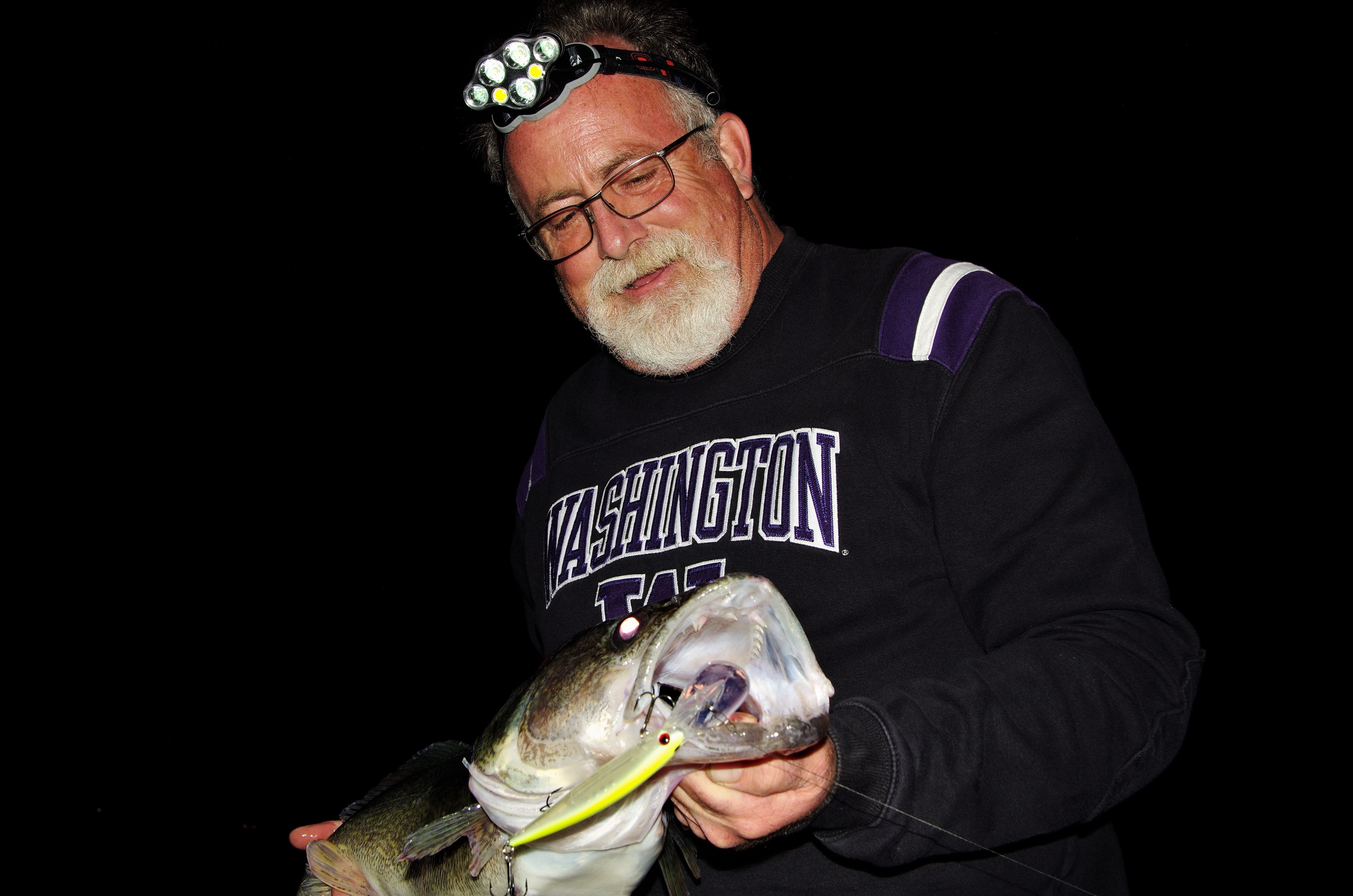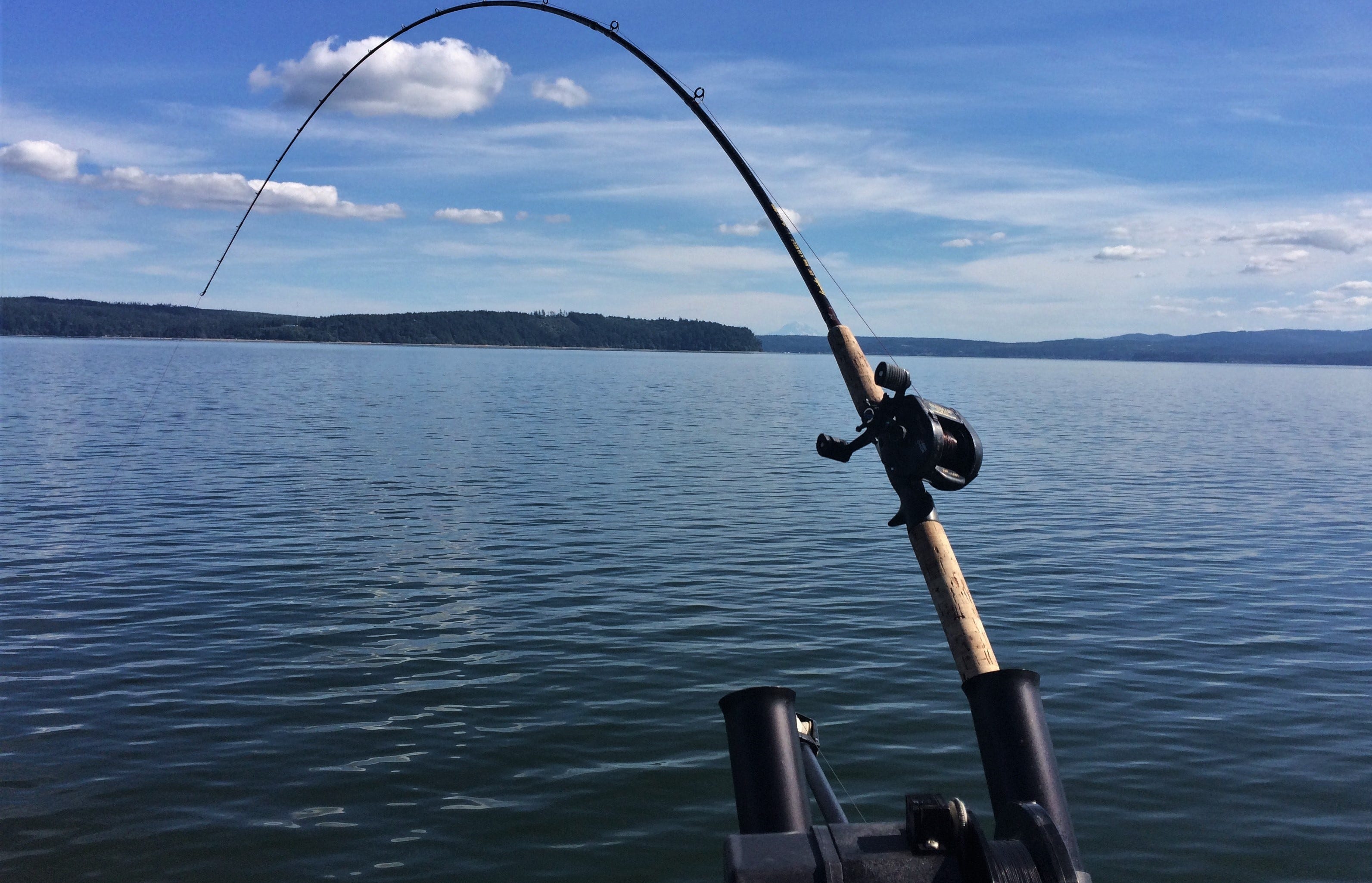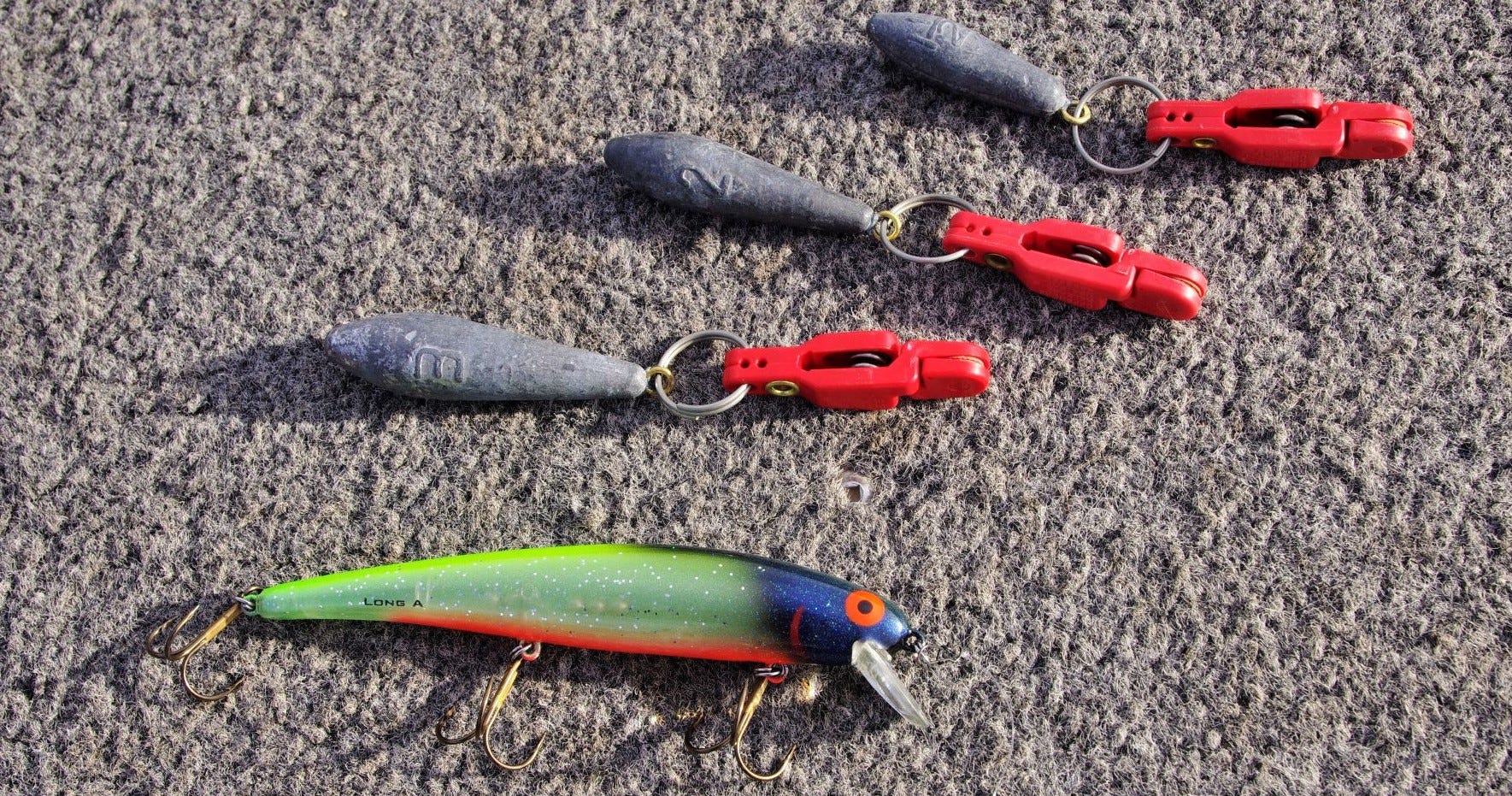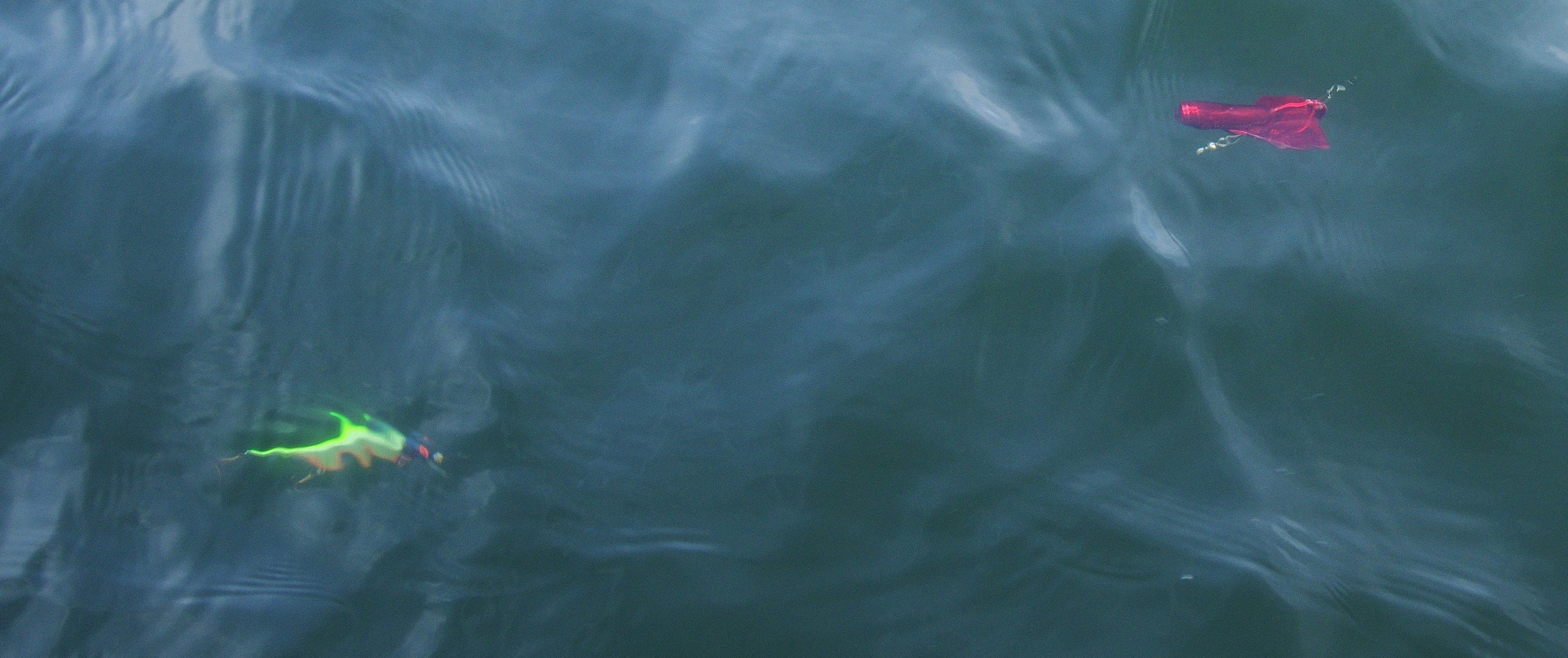- Apr 14, 2021
Catch More Walleye by Controlling Crankbait Depths
Several methods can help you troll crankbaits at specific depths, which can be critical for getting walleye to bite.
Doesn’t take long for it to be clear: crankbait fishing – particularly crankbait trolling – is a depth-control game. Whether you are targeting walleye in the bottom zone or suspending well above bottom, to catch them consistently you want to present your lure in their faces!
Walleye generally aren’t slashing or attacking type predators as much as they are stalkers. They just don’t typically streak away from the depth they are using to smash your crank. In my circle of friends, we call it a “glom on” bite when they slowly “glom on” as your bait wiggles past. It’s the most common type of walleye bite and results from their reliance on big teeth to hold prey until they swallow. They don’t need to run baitfish down or smash them. They just need to glom on!
Modern fish finders are so good at showing the exact depth where most fish are holding that it makes sense to run crankbaits at that exact depth. Hard-bait aficionados dial in their presentation to pull lures at a precise depth, and it’s important that you dial in your crankbait game just like the experts.
Flat-Linding
There are lots of sources to tell you how deep each crankbait trolls, depending on how much line you let out (and depending on the diameter of your line. Crankbait specialists almost universally have running depth apps in their phones. Just search “Crankbait Running-Depth” and you’ll find apps as well as books, charts and other printed info to tell you the inherent running depth of most any hardbait. This info is straightforward and simple to apply. Trolling crankbaits based on the inherent running depth is called flat-lining.
If walleyes are shallow, then crankbaits that run 6-8 feet deep with 100 feet of line out like 15A Bomber Long A and Cotton Cordell Ripplin’ Red Fin will run right into the fish. If you need to get shallower, you simply let out less line while trolling. To fish deeper, it’s pretty simple to choose a lure that runs the depth you need to fish. Lures like the Smithwick Perfect 10 Rogue and Bandit Walleye Shallow will troll into the 12-foot zone. To hit walleyes at 16 feet, you can choose any of dozens of lures, though anglers adept at triggering walleyes trust old favorite baits like the Cotton Cordell CD6 Wally Diver or 24A Bomber Long A. For those deep fish in the 20-25 foot range the Bandit Walleye Deep, Bandit Generator or 25A Bomber Long A have the big diving lip to dredge, and walleyes have a well-documented weakness for these deep divers.
Flat-lining has several advantages for anglers. Trolling lures on flat-lines is easy to do and requires no extra gear or technical expertise. Some anglers prefer small line-counter reels to dial in the amount of flat-line back to the lure. Some mark the line at a set distance. Back in the day, before I splurged for small line-counters, I marked my line at 105 feet with a magic marker.
But what if you have a shallow running jerkbait that you want to drag deeper? Or in the extreme, what should you do to get a Bandit Walleye Deep down to 37 feet?
There are lots of depth control options that have a proven record.
Adding Weight


Whether you add a couple split shot ahead of your lure or clip into the release behind a 12-pound downrigger ball, adding extra weight has been a time-tested way to add depth to your crankbaits.
Gear like “river rigs” with a dropper weight off a three-way swivel give nearly unlimited potential to add whatever amount of weight your gear can handle. Rubber-core, keel sinkers, split shot and other on-line/in-line sinkers also offer wide variability of weight. Whether droppers or in-line, these weights have a noteworthy drawback: They require a short enough leader back to the lure so netting fish isn’t unwieldy. Try netting a hot fish with a 15-foot leader! For most situations, six to eight feet is about the max leader length that our rods can control.
Downriggers


Downriggers allow for extra long length between the downrigger ball and the lure. Let out 50 feet of line and clip into the release. If that’s not enough distance to prevent your lake’s wary walleyes from seeing the ball...then let out 150 feet of line! Just remember, the flat-line diving depth of your crankbait still applies behind the ball!
Downriggers are not as popular for walleye depth control as they are for salmon, lake trout and other salmonids, but they offer precise and repeatable results. Walleyes’ “glom on” bite requires fairly soft line-release tension or the fish may just swim along with the lure and not trip the release for you to start the fight. Most downrigger trollers opt for fairly shallow running lures that dig down only slightly below the downrigger ball. Deeper divers pull so hard that the release tension has to be fairly extreme and often won’t trip when you get bit.
Lead-Core Line
Lead-core line is another old-school trolling technique to take plugs deeper than their inherent running depths. Lead-core adds weight subtly by weighting the line itself. Metered with alternating colors every few feet, you adjust trolling depth with “3 colors” or “4 colors” (or perhaps more) lead-core for repeatable results. Again, make a quick search for apps and charts that help you dial in your running-depth at various speeds. One major advantage of the lead-core approach is that, like flat-lining, you don’t have to add extraneous “stuff” to your presentation—no clips, swivels, sinkers or other terminal tackle to factor in.
Snap Weights


A more recent approach to add weight for deeper crankbait running depth — if we can call 30 years “recent” — is using on-line snap weights. When Bruce DeShano of Off Shore Tackle handed me my first box of snap weights back at the Professional Walleye Trail National Championship on Lake Erie in 1993 I didn’t realize how popular this box-of-tricks would become.
Like the other depth-control approaches, snap weights have charts online as well as apps with specifics regarding line-out, trolling speed and resulting running depth. On a recent trip out to the Columbia River on the Oregon/Washington border we found fish on a 37-foot-deep basalt reef. No sweat. Bandit Walleye Deep crankbaits plus 2-ounce snap weights 50 feet up the line, plus an additional 75 feet of line out, and those submarine walleyes couldn’t hide.
Snap weights are surprisingly easy to use. They operate with a tight release like a small downrigger release that can be pinched on the line as far above the lure as you choose, with 50 feet being kind of a cultural norm. The amount of weight is highly variable, but most “snappers” use weights from 1 to 3 ounces. When fighting walleyes to the boat you simply pause to instantly squeeze the snap weight free from your line. Then get the net while fighting the fish the rest of the way in!
It’s important to point out that adding weight with snap weights, droppers, keel sinkers, lead-core and most everything other than downriggers is HIGHLY SPEED DEPENDENT. This is not necessarily a bad thing. Troll slower for more depth and faster for less. And when trolling in “S” curves the weight drags the slower inside lines deeper which simultaneously pops the racing outside lines a bit shallower. Again, reference the online apps and charts for specific depths and speeds.
Divers
Another depth-control technique borrowed from the salmon/trout/steelhead crew is to use a depth-seeking diver in front of your crankbait. This can be as simple as a deep diving crankbait with a smaller hardbait tied off to the forward hook eye with a few feet of leader (make sure your state allows multiple lures per line). The deep diver brings the tag-along lure into the depths with it. The hard-core diver crew tends to use Dipsy Divers or Jet Divers to attain extra depth. Luhr Jensen Jet Divers come in various sizes, size 20 dives to 20 feet, size 30 dives to 30 feet etc.
Divers dig down without the thumping crankbait vibe. Basically, the diver leads the way without added action while the crankbait waggles behind on a few feet of leader. And I’m sounding a bit repetitious, but online guides to diving depth are well worth seeking.
It’s no secret that crankbaits win a disproportional percentage of walleye tournaments, nearly half by some media statistics. And as long as various crankbaits, plugs and hardbaits have existed, anglers have drug them behind the boat to get those walleyes to “glom on.”
Once you learn the diving depths of various lures you have the option to go beyond flat-lining to take those baits deeper than they go on their own. Choose a method to take your cranks into the depths and make sure you clean the smudges off the lens on the camera in your phone. You are likely to be snapping some pics!


Comparing Techniques
FLAT-LINE TROLLING
Pros
Easy
Consistent
Repeatable
Cons
Limited to Lure’s Inherent Running Depth
WEIGHTED ASSISTS—Lead-Core, On-Line/In-Line, Three-Way with Dropper, Snap Weights, Downriggers
Pros
Highly Variable Depths Possible
Can Take Shallow Runners Deep
Can Take Deep Runners to Extreme Depths
Cons
Highly Speed Dependent
Limited to Manageable Leader Length (Except Snap Weights)
Requires Extra “Stuff” on Your Line (Except Lead-Core)
More Variables
DIVING ASSISTS—Jet Diver, Dipsy Diver, Crankbait Diver
Pros
Simple
Consistent
Repeatable
Can Work as an Attractor
Cons
Requires Controllably Short Leader
Less Variable Depth Choices
May Make Some Fish Wary
Drag Hard, Requiring Stout Rods and Line
About the Author:
Ron Boggs onve held four Freshwater Fishing Hall of Fame Catch and Release records for walleye, including all-tackle and three line-class records. (Three were caught on a Bomber 25A.) He wrote a widely published and detailed article on how he caught his record fish, and all were broken the following year.



